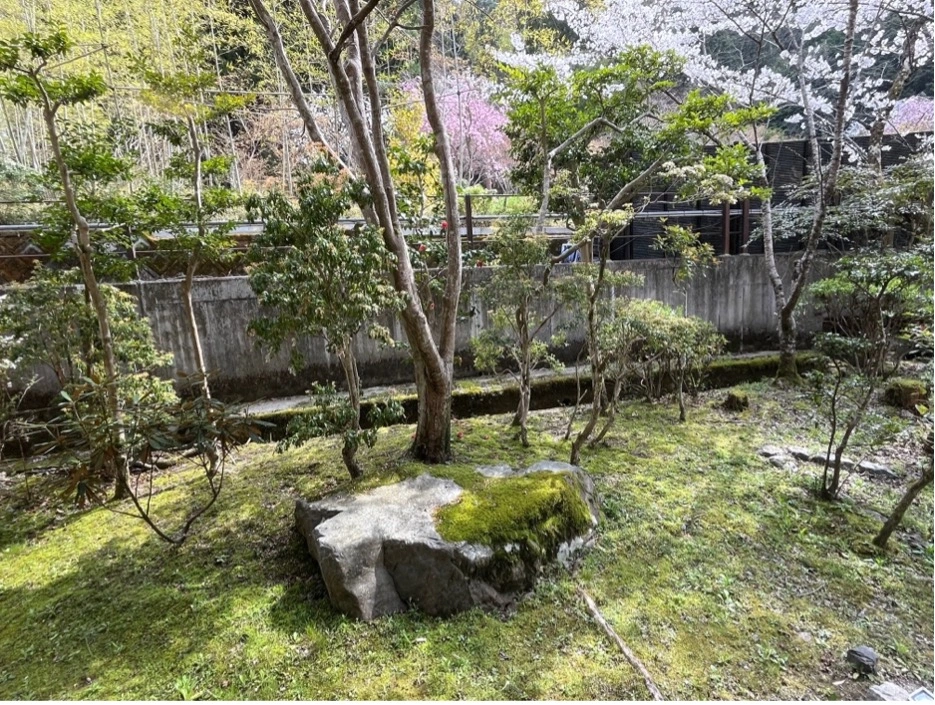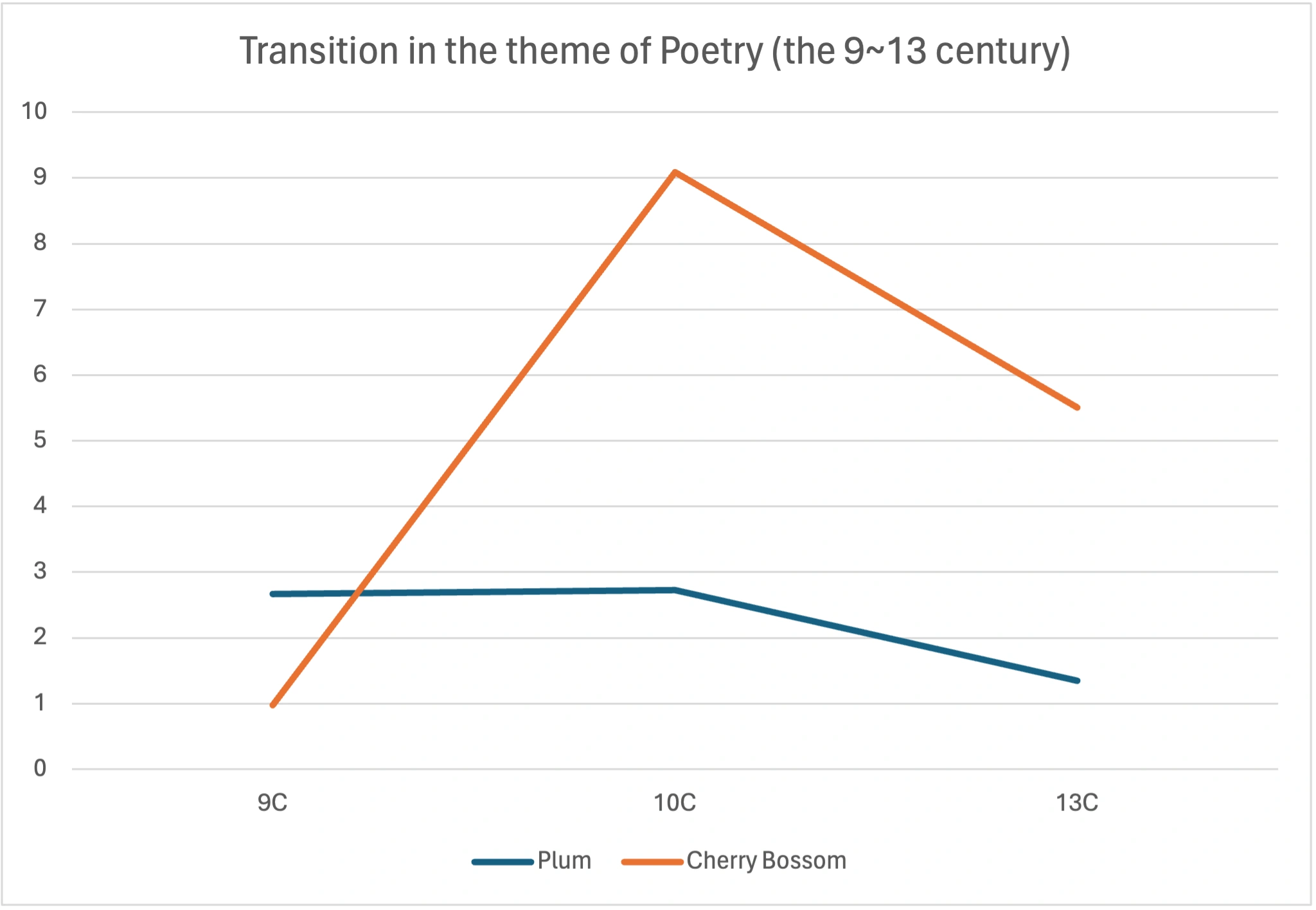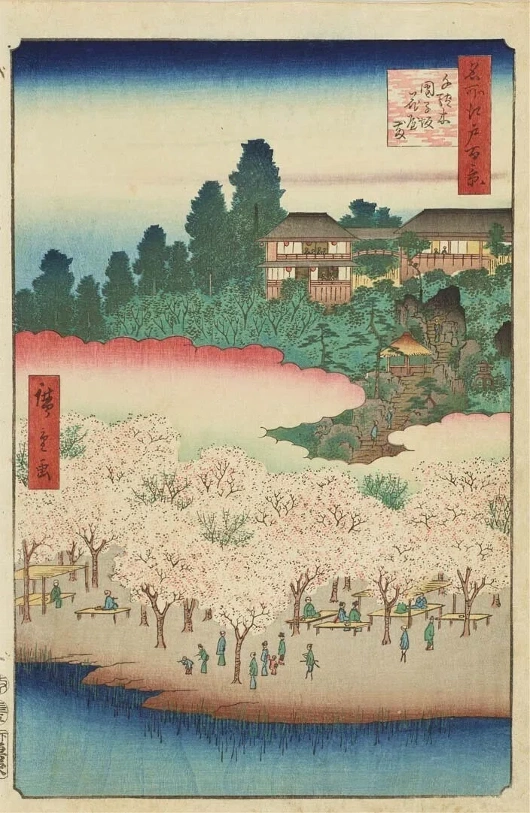The cherry blossoms are in full bloom in the city now. However, They have not yet to come to full bloom in Yase, Kyoto, where COGNANO Headquarter is located, because of the low temperatures in the early morning and late evening. Cherry blossoms bloom when people begin to turn over a new leaf in their lives such as entering school and starting their career in Japan, so they are seen as a symbol of the season. The short-lived nature of cherry blossoms symbolizes Bushido, or ancient warriors’ spirit of embracing the fleeting moment of life.

Let me make a list of what I know about cherry blossoms.
- Today, Somei Yoshino is considered to be the representative cherry blossom species.
- The Somei Yoshino species is a mutant developed by a gardener in Komagome Somei, Edo (ancient Tokyo) during the Genroku period (around 1720).
- Since the species do not reproduce by pollination, its clones were propagated and spread throughout Japan by grafting.
- Because they are genetic clones, the blossoms almost synchronize in blooming and falling in the same area.
- Somei Yoshino trees, no matter how remote they grow, are artificially grafted trees.
- Yoshino is the image word for Mt. Yoshino of Nara, famous for its cherry blossoms.
So, were Japanese people not interested in cherry blossoms before the Somei Yoshino was developed? Of course, cherry blossoms seemed to be popular. There were various types of cherry blossoms, and Norinaga Motoori, a famous academic of Japanese literature in Edo era (1730 ~ 1801) wrote that no other species would beat wild one, and that he found the blossoms of newer ones like Somei Yoshino too flashy to match Yamato Gokoro or Japan’s authentic mindset. His favorite cherry trees seemed to be ones blooming gracefully in obscurity on a hillside. He described this “indescribable cuteness and loveliness” as “mono no aware.” Interestingly, Norinaga was also a kind of data-scientist who broke the code of pronunciation for the Japan’s oldest history record named Kojiki that was written just in Chinese character in the 6th century. Therefore, he is not only a literature fan. What role did cherry blossoms play in people’s lives in the Heian Dyansty in the 10th century where The Tale of Genji was written. Norinaga described this novel as the pinnacle of Japanese culture. Heian aristocrats obviously loved cherry blossoms. Waka poems, a traditional Japanese poems, well express their attachment to the blossoms. Even before Somai Yoshio was developed, the way cherry blossoms burst into full bloom and fall would strike a chord of Japanese people.
How about in the latter 8 century Michizane Sugawara, the most prominent academic and politician in the era, loved plum blossoms. A legend has it that when Michizane was being shunted off to Dazaifu in the western part of Japan after his setback in political strives, his unabated attachment to the plum blossoms in Kitano, Kyoto, drove them to fly up in the sky to follow him. You should note that it was late at night when the plum blossoms in Kitano flew to Dazaifu. They were termed as Tobi-ume or flying plum petals. The love of plum blossoms focused on smelling makes a sharp contrast with the love of cherry blossoms focused on viewing.
When the east wind blows, you guys, the plum blossoms, should never forget that it's spring to bloom even without your lord.
Michizane Sugawara 901
Why plum? The love of plum blossoms in the 7th and early 9th century was supposed to come from China, from which Japan imported Kanji or Chinese characters and Buddhism. Since the flowers mentioned in Chinese poems invariably represented plum blossoms, the love of the blossoms by Japanese court aristocrats probably reflected their literacy in Chinese culture. Studying the subjects in waka poems shows that people’s preference shifted from plum blossoms to cherry ones around the mid-9th century, which roughly coincided with the time when the envoys to China discontinued.

It is assumed that as China (Tang) declined, its influence on the Heian dynasty diminished, and that the preference for cherry blossoms was replacing that for plum ones, and by the time The Tale of Genji, the first long novel in Japan, was written, the love of cherry blossoms among people had taken root and Japanese own distinctive culture had surpassed Chinese one (albeit to a limited extent).
Getting back to modern times, I wonder how many generations it took for people to recognize the Somei Yoshino cherry tree, which used to be only a rare species, as a representative cherry tree. It is well known that Norinaga Motoori, who passed away in 1801, disliked Somei Yoshino, but ukiyo-e woodblock prints from the late Edo era show that Somei Yoshino had already become the mainstay for cherry blossom-viewing.

The Somei Yoshino cherry tree, which was developed during the Genroku era (around 1720-1730?), spread throughout Japan, and it probably took about 70 years for many people to think that “cherry blossoms = Somei Yoshino''. If one generation is 25 to 30 years, the hypothesis is that it takes three generations for a complete shift in awareness to take place. consciousness. If propagation had been through electronic information rather than grafting, the replacement would have taken an even shorter generation. This type of consideration is an easy-to-understand example of how literature data can be used.
Since the foundation of COGNANO, the concept of generations and gaps has always been on my mind. What I mean by generation here has nothing to do with actual ages, and what I mean by gap is the distance in awareness. If even I want to know about Waka poetry and history of cherry blossom, I can access unlimited data on the internet. In fact, ChatGPT provided me with the original data for the graphs posted on this blog, and I was able to visualize it in 5 minutes.
I continued my biology research for about 25 years, spanning one generation, but what I thought were research results were not available for computers. COGNANO is currently trying to organize the most basic and dynamic information, such as the interactions of bio molecules, for providing them as a trainer in deep learning. The IT members who overcame the bio-related barrier and gathered at COGNANO are continuing translation and transfer work to build the IT corpus day and night. To me, they look like brave men pioneering through an unexplored wilderness. However, seeing someone as a hero must be an old-fashioned sense.
COGNANO is currently focusing on cancer treatments to demonstrate the usefulness of data science in biotechnology. Through joint research with major domestic universities, we have already been able to prove the drug's efficacy against cancer in animals. Can data science decipher the mysteries of veiled cancer and shed light on life? The study of classical documents that Norinaga aimed to use was to approach the ancient world based on data. Norinaga's quest is not so much about history as it is about realistically (dynamically) recreating the minds of the people who lived in the ancient era. The phrase "mono no aware~ a sense of intrinsic favor'' sounds like a mere literary sentiment, but it seems that Norinaga was actually aiming to explore universal theory. COGNANO also wants to move one step closer to the principle of life through data science, without being influenced by trends in biotechnologies. While keeping in mind that my mission is to first and foremost contribute through the development of therapeutic drugs, I am enjoying the short heyday of cherry blossoms here.
This is edited by Dr. Kimio Fujii for english.